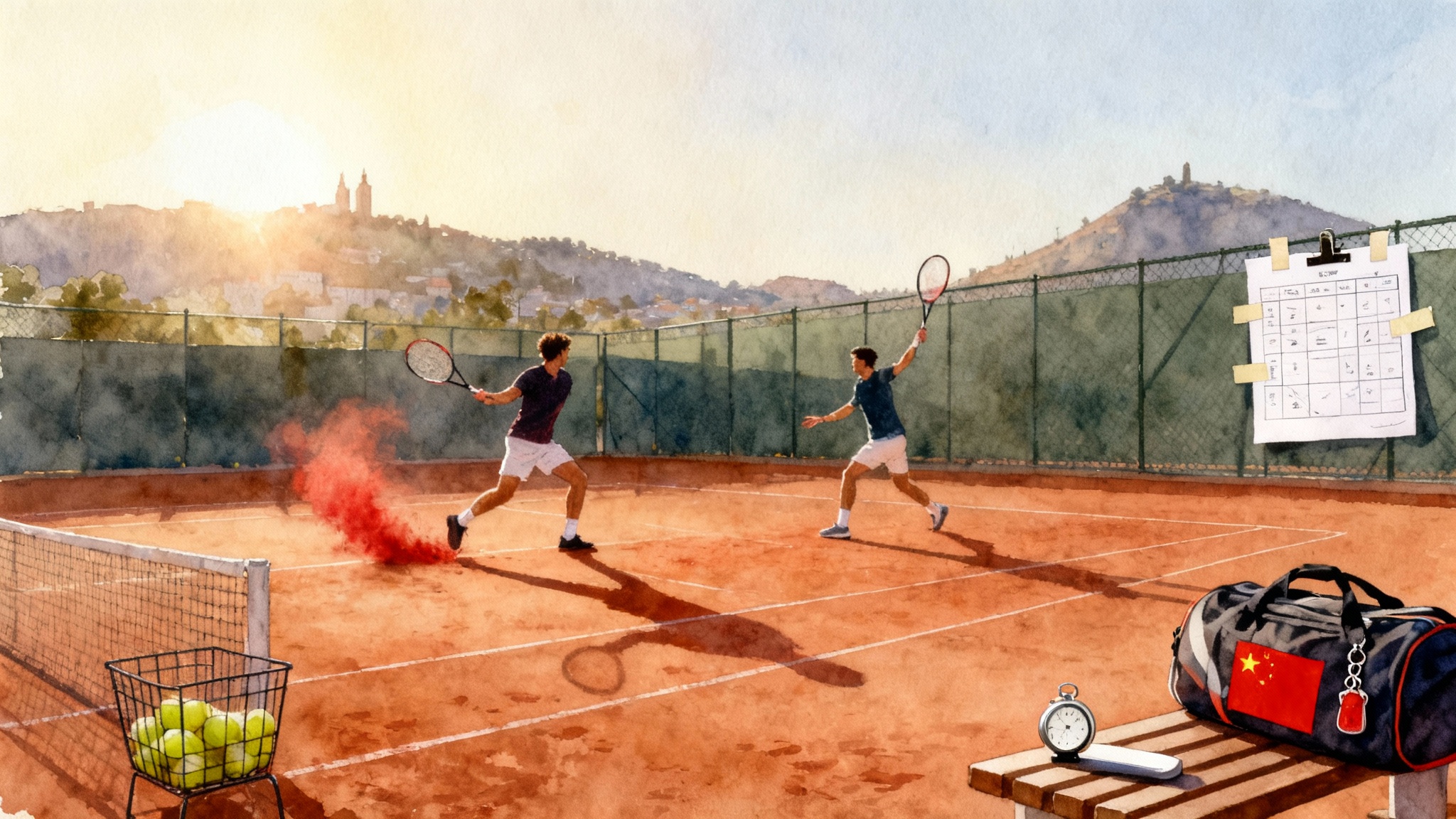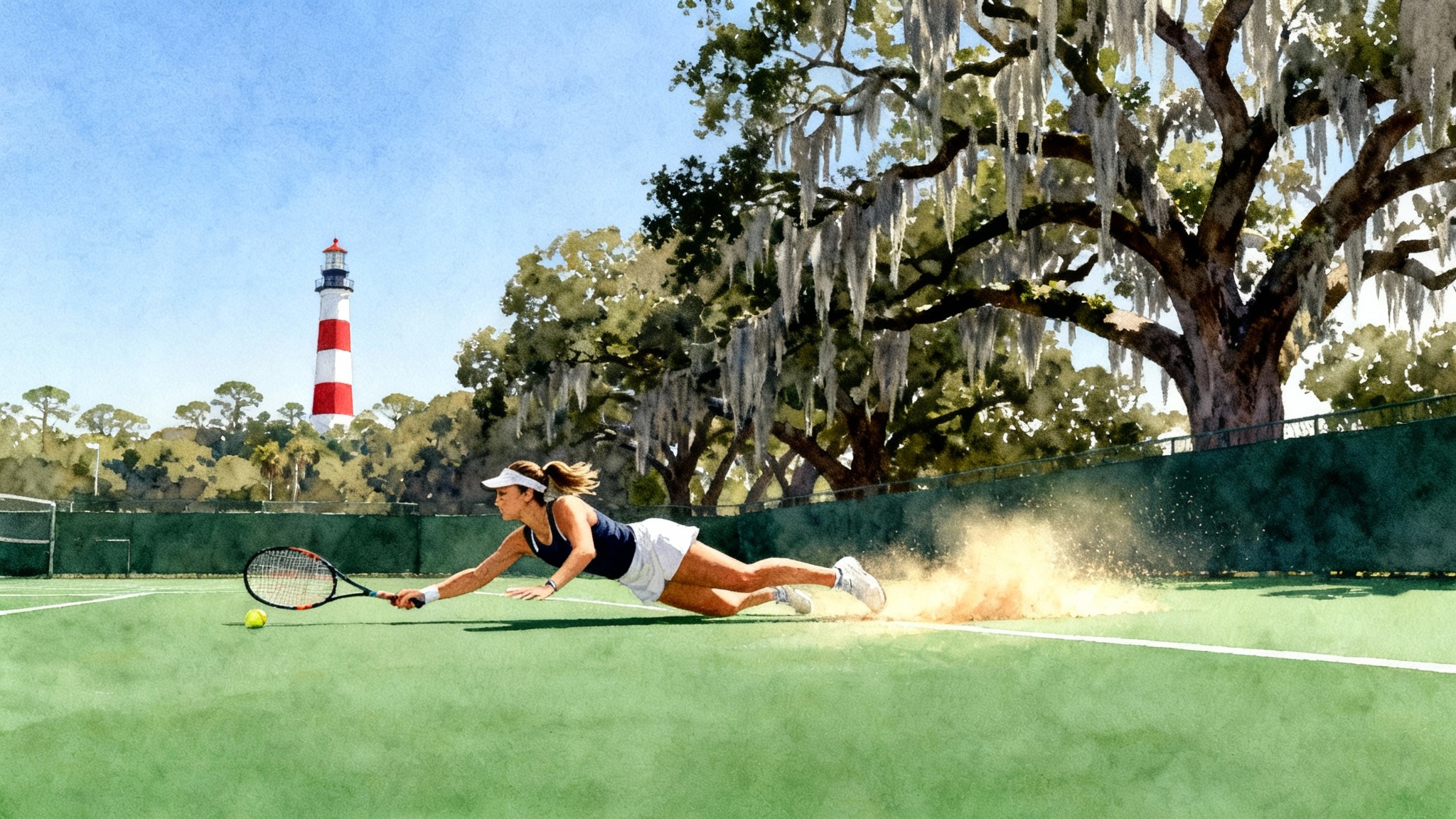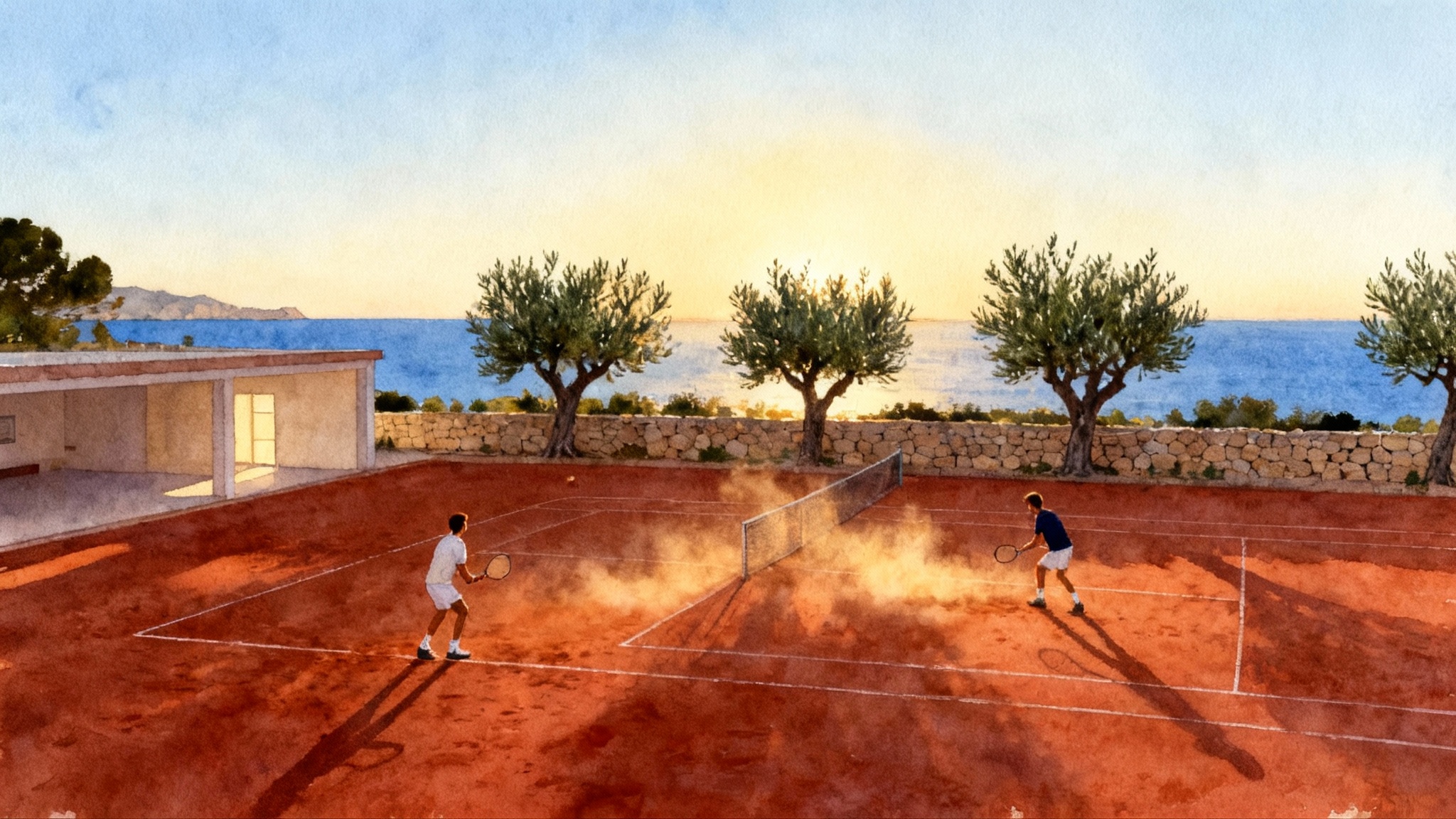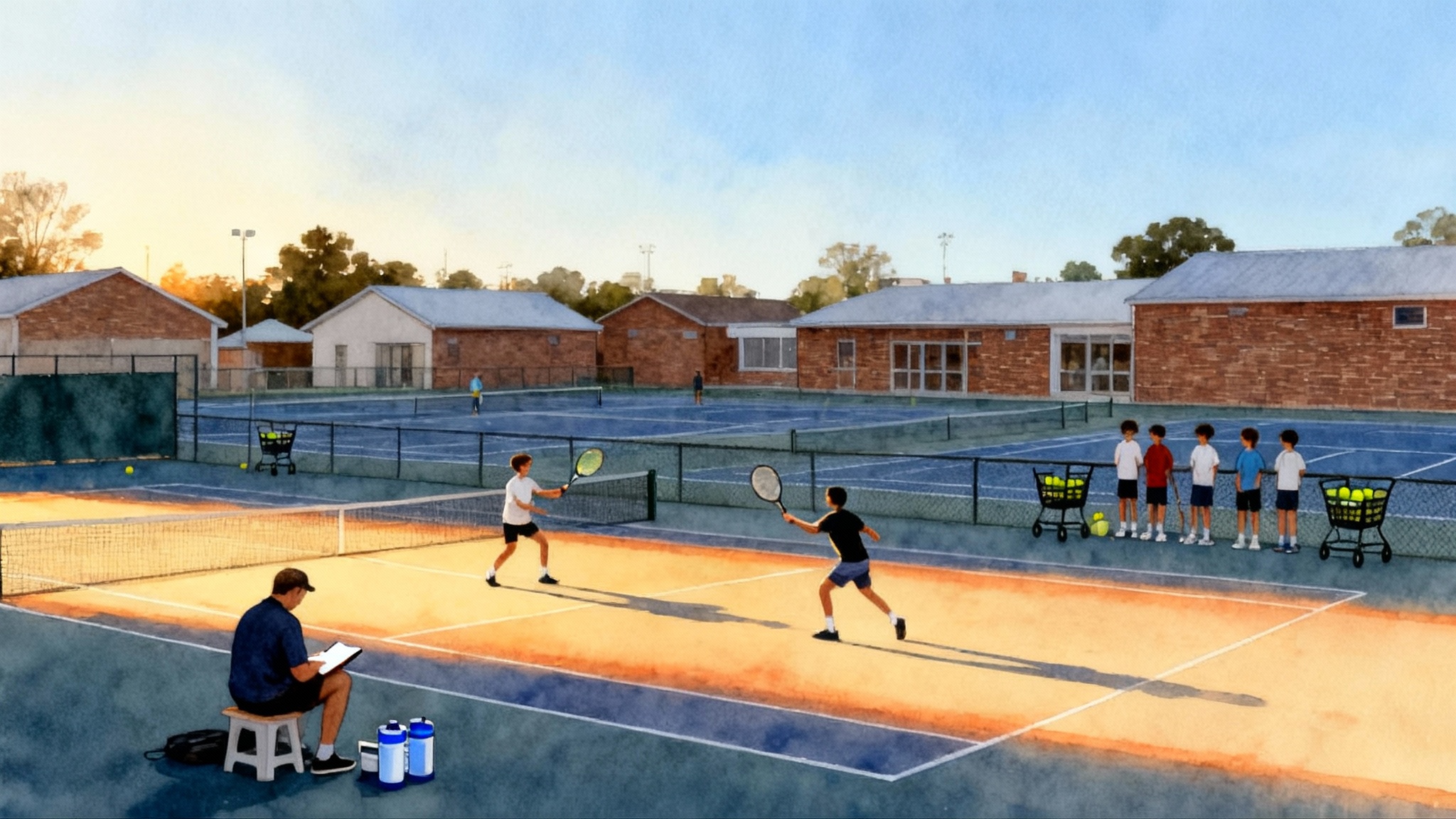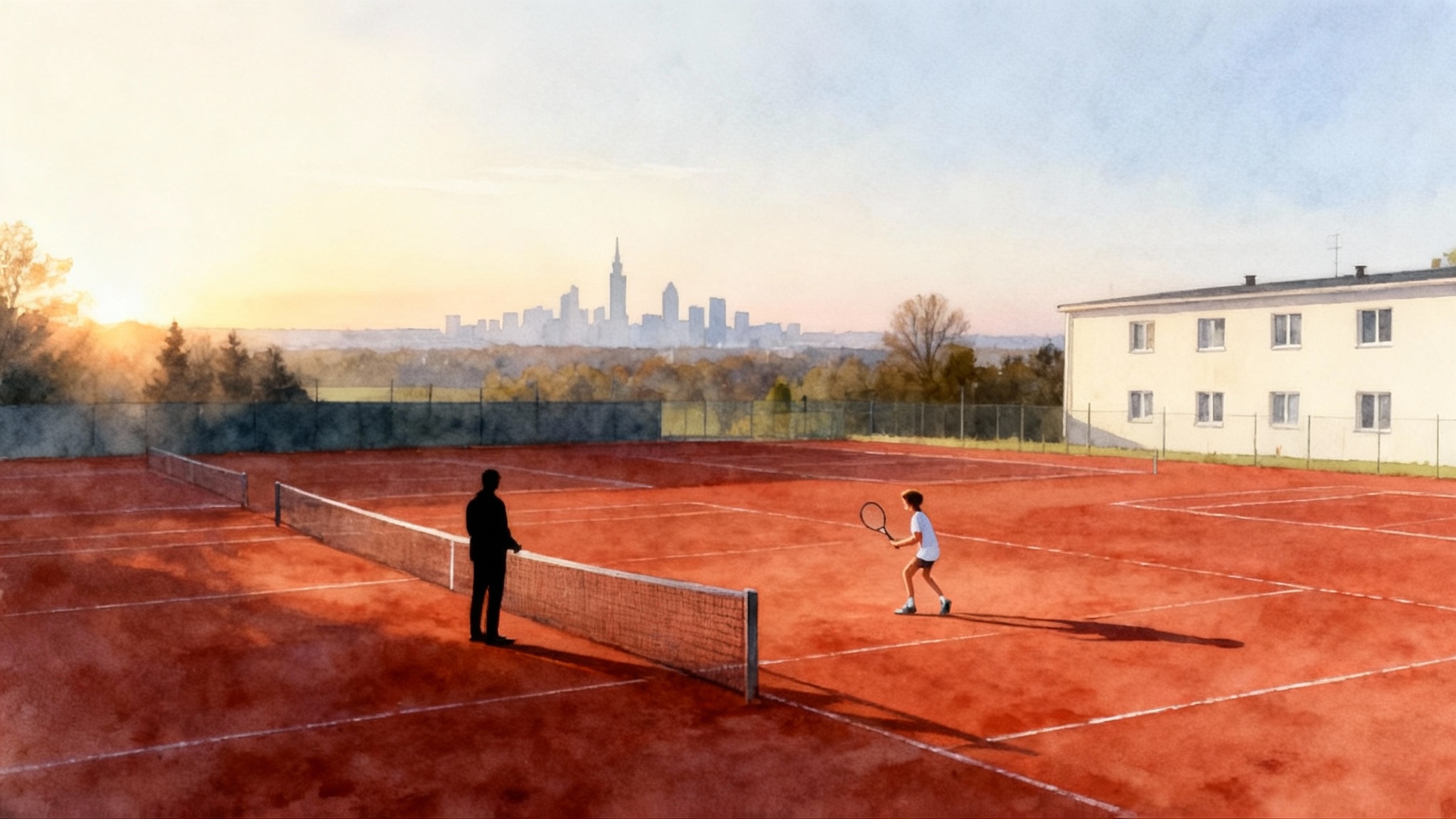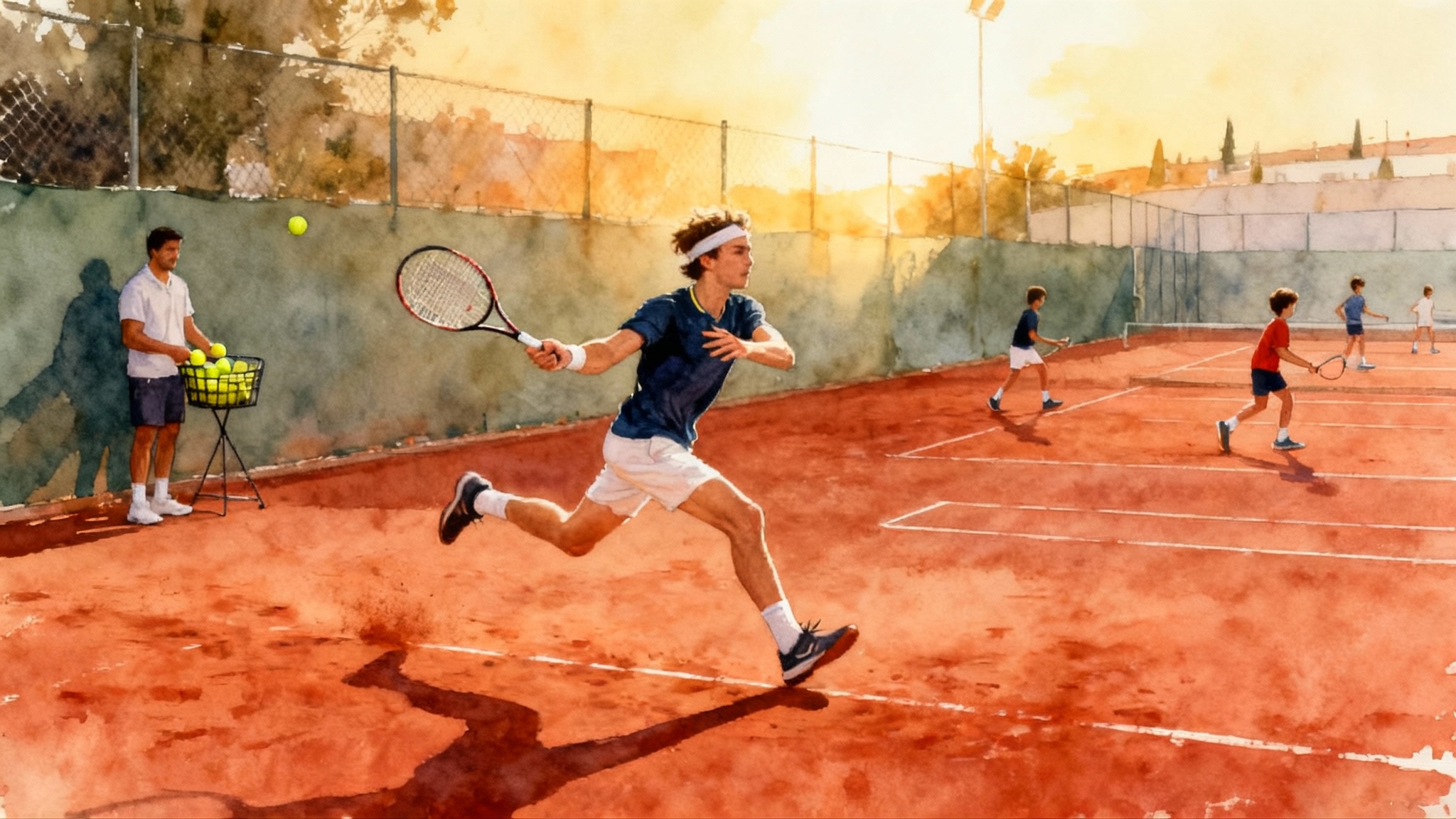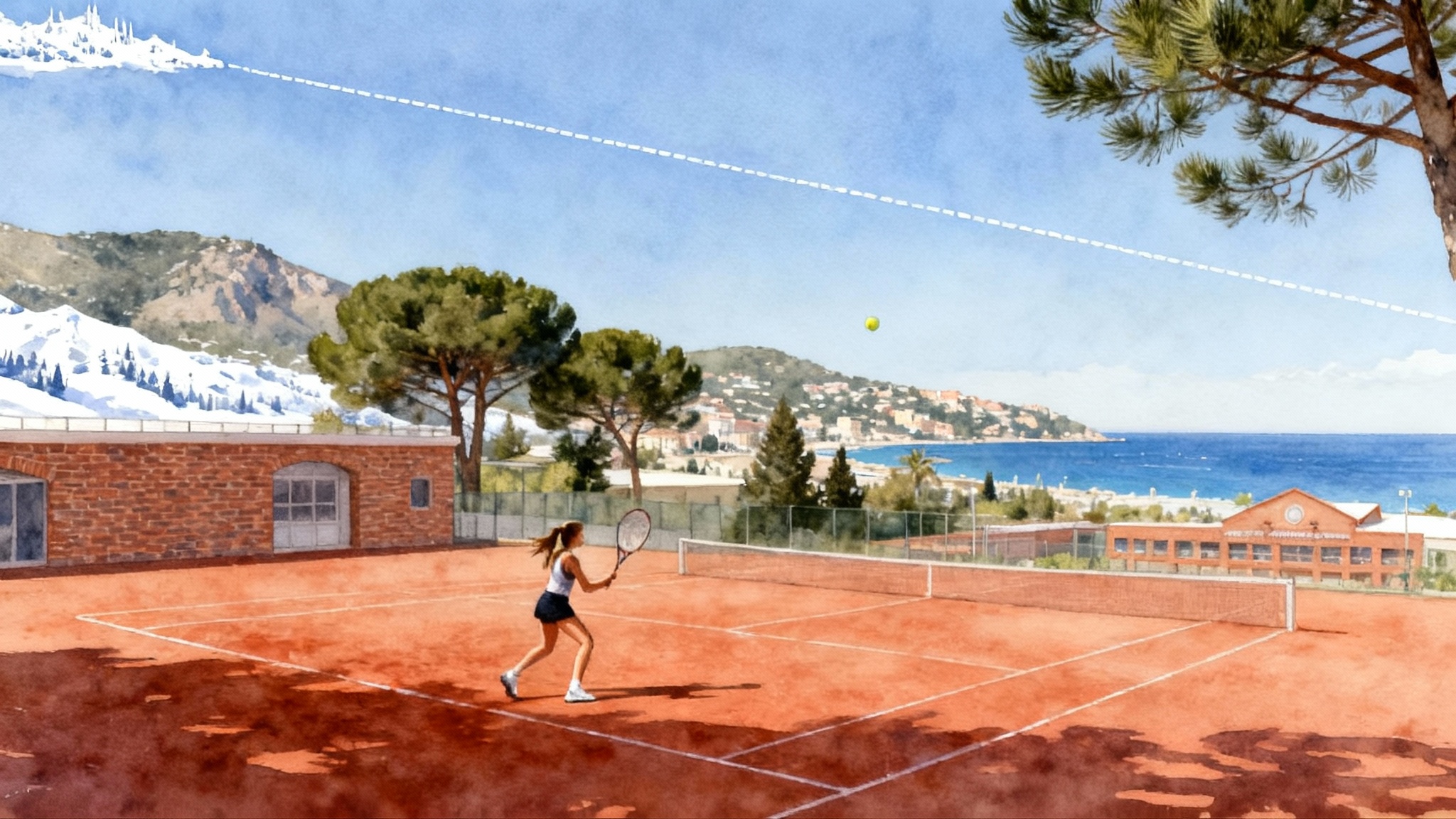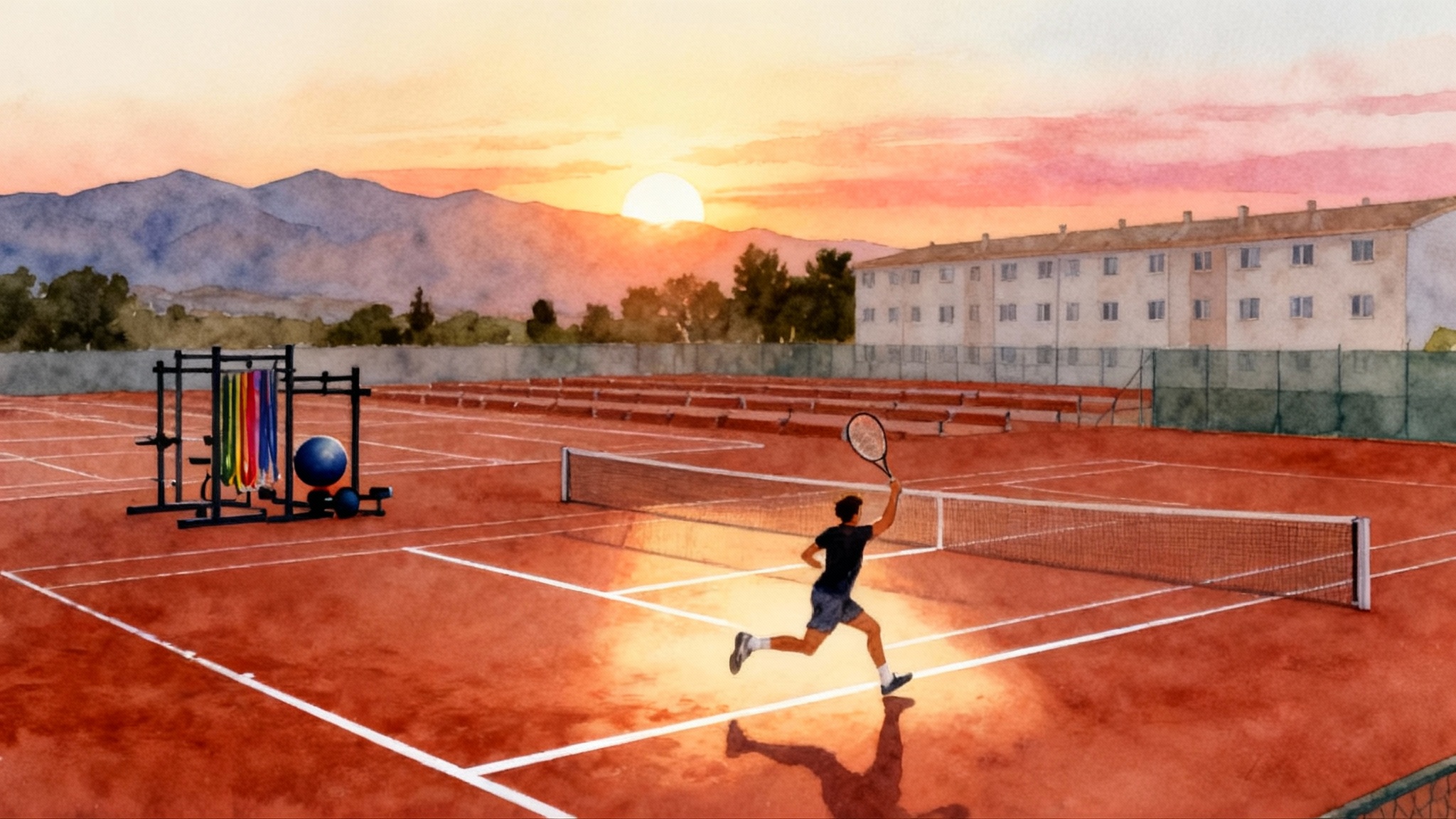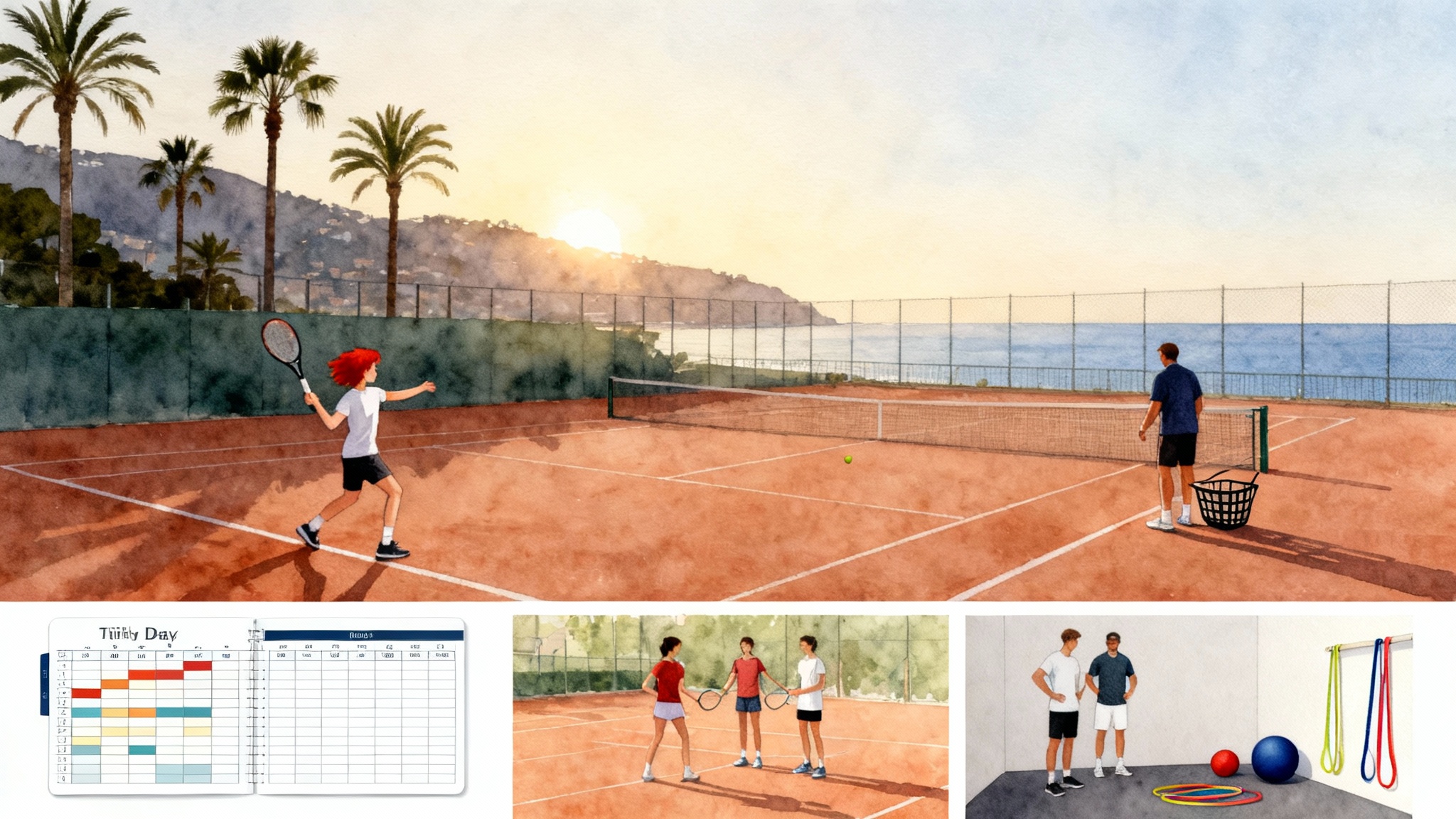From Murcia to Majors: Inside Equelite’s Alcaraz Blueprint
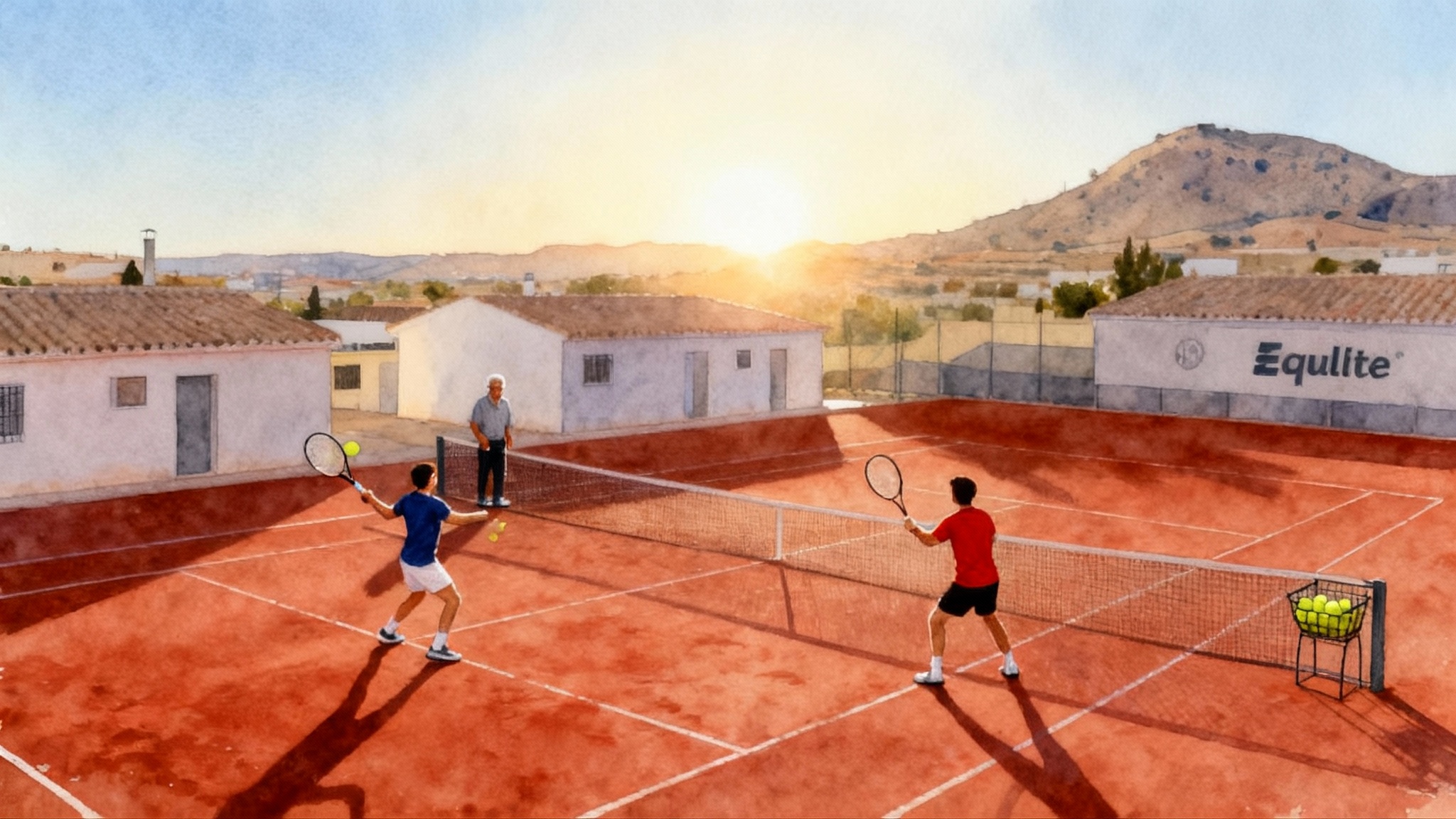
The road from El Palmar to Villena to world stages
Carlos Alcaraz’s rise looks fast from the outside. Inside the day to day, it reads like a tightly drawn blueprint. The move from Murcia to Villena as a mid teen, the choice of a mentor coach, the structure of practice courts, and a progressive calendar from Futures to Challengers to the ATP Tour stacked together like bricks. By September 2025, the results were unambiguous, with six Slam titles and a game designed to win across surfaces. Those six are on the record, as noted in an ATP summary of his 2025 season.
This article follows a clear timeline of Alcaraz’s development and translates it into decisions families can repeat. For a useful comparison in pacing and surface balance, see Sinner’s Piatti Academy path.
Why Villena, why Ferrero, and why then
- September 2018, age 15: Alcaraz began working full time with Juan Carlos Ferrero and the Equelite team in Villena after periodic visits as a younger junior. That shift provided structure, mentoring, and daily opponents older and stronger than him. The start date and partnership were reported in an ITF feature on coaching start.
- 2019: Challenger debut arrives on home turf at the academy’s event in Villena, a sign that the calendar would grow in concentric circles from a familiar base.
- 2020: First ATP main draw win in Rio confirms the speed of the climb, but the schedule still preserves room for Challengers and training blocks.
- 2021: First ATP title in Umag at age 18 shows that the game plan, not the hype, is doing the work.
- 2022 to 2025: Majors across hard, grass, and clay, with 2025 adding two more Slams. He does not chase every event. He uses time between tournaments to sharpen the patterns you see him play under pressure.
Families do not need a former world number one to copy the structure. They need to copy the decision logic.
The day to day at Equelite: what changed and why it mattered
Think of a player’s development as building a multilingual vocabulary. Equelite’s daily plan made sure Alcaraz learned to speak tennis in three fluent dialects: clay, grass, and hard. Four habits stand out.
- Older, stronger sparring partners
- Purpose: Raise the speed limit of practice. Older hitters do not give you the ball you want, they give you the ball you will face in finals. The goal is to normalize heavy pace and awkward height so match day feels familiar.
- How to copy: If your academy lacks depth, rotate weekly sessions with strong adults or college players. Pay travel stipends before you pay for new string dampeners. Your junior needs to feel outgunned three or four times a week until they do not anymore.
- Heavy pattern work
- Purpose: Replace vague aggression with repeatable choices. Alcaraz’s signature combinations were rehearsed in chunks: backhand line to open the forehand inside in; forehand cross to move the opponent wide and then the drop shot behind it; return block deep middle followed by an early backhand up the line. Patterns reduce decision noise.
- How to copy: Build three to five named patterns per surface and track weekly conversion rates in practice. Example on hard courts: forehand cross to pull wide, then forehand inside in to the open court, then step in and volley if the ball floats. Practice as best of 15 with scoreboard pressure. If your player cannot call the pattern before the point, they are reacting.
- Proactive net skills
- Purpose: Break stalemates and shorten points against bigger bodies. Ferrero’s team treated the volley like a finisher in a combo, not a separate art. The intention was to make the opponent pay for giving up depth first.
- How to copy: Run a rule session twice a week, 30 minutes each, where any short ball inside the baseline must be followed in, no exceptions. Use basket feeds that start with a deep neutral ball, then a short sit, then a live point beginning with the approach. Score aggressive errors and teach the player to accept them as tuition, not failure.
- Mixed surface diet
- Purpose: Make the skill set portable. Villena’s clay courts made up the base, but the team added hard court blocks that standardized returns and first strike patterns. Grass preparation focused on first step speed and posture during low contacts. The outcome shows in the titles on three surfaces.
- How to copy: Even if you live on one surface, simulate the others. On clay, put down target zones for lower bounce serves and play no sliding allowed sets to simulate hard. On hard, insert slice approach quotas to simulate grass point construction.
A timeline you can adapt
Below is a realistic model for an ambitious 14 to 18 year old player. It mirrors Alcaraz’s stages, minus the hype and with guardrails against overuse.
-
Age 14 to 15: Local anchors, selective travel
- Training: Five to six days per week, two court sessions most days, plus two strength sessions. Fly in older hitters twice a month if your academy cannot supply them.
- Competition: National level events and two to four ITF junior tournaments. Use them to test patterns under pressure, not to chase points.
- Decision point: Vet the mentor coach. Watch three practices, three matches, and one review session with another player. If the coach cannot translate practice to match footage, keep looking.
-
Age 15 to 16: Part time relocation, first pro steps
- Training: Transition into blocks at a performance center, ideally one to two weeks per month at first. Continue schooling solutions that fit travel, not travel that breaks schooling.
- Competition: First ITF Futures qualifying, then main draws. Expect losses. Measure whether your player creates pattern opportunities against Top 500 pace.
- Decision point: If training quality at home is inconsistent, move closer to the mentor coach before the body grows out of the window to rewire technique.
-
Age 16 to 17: Challenger exposure with rest built in
- Training: Eight to ten week blocks divided into two or three week chunks that end with competition. Strength focus shifts to power and tendon capacity. Sprints and landing mechanics prevent the overuse dip that swallows many talented teens.
- Competition: Two or three Futures to start a block, one Challenger at the end. Repeat on a new surface. Aim to feel under qualified for the first two events and borderline ready by the third.
- Decision point: Set a hard limit on travel weeks. The calendar should include at least twelve free weekends for reset.
-
Age 17 to 18: Wild cards, first ATP 250s, and targeted Challengers
- Training: Film every return game and every first four shots in rallies. Ferrero’s staff has long treated the first four shots as most of the match.
- Competition: Ask for wild cards that make sense geographically and tactically. If your player’s best patterns rely on time, pick a slower hard court swing first. Keep a Challenger available the week after any big ask to rebuild confidence through winning.
- Decision point: Move to full time with your mentor coach if the data says your player’s patterns hold against top 100 pace. If not, stay in the deep end at Challenger level until they do.
How Equelite vetted decisions and how you can too
Relocation
- Why: Daily quality beats occasional intensity. A permanent move only makes sense when the ratio of top level sessions at the new base crosses 50 percent of total court time.
- How: Track quality sessions per week for six weeks at home. Then spend a two week trial at the candidate base. If the second number is not at least double, do not move yet.
Mentor coach fit
- Why: Champions are not built by drill volume. They are built by coaches who thread game identity into everything.
- How: Use a three part screen.
- Pattern clarity: Ask the coach to describe your player’s three best patterns and where they fail. If the answer is generic, pass.
- Video feedback: Watch them run a thirty minute video review. Do they connect patterns to mistakes and to practice sessions this week, or is it motivational fluff.
- Progress markers: Request six week goals that are measurable. Example: backhand line percentage above 65 percent when set up off forehand cross on hard court.
Calendar design
- Why: Bodies break from unmanaged spikes, not from hard work. Equelite’s calendars respected load oscillation.
- How: Draw your year as four mini seasons of ten to twelve weeks. Each mini season includes one foundation block with extra strength work, one build block where match play increases, and one performance block that includes your biggest event. Put no more than three tournaments back to back, and make week three a smaller event or a doubles emphasis week.
Surface translation
- Why: Winning across surfaces is a library of patterns that survive bounce changes.
- How: Build a three surface pattern map.
- Clay: Deep middle return, heavy forehand cross to push the opponent off the baseline, drop shot only after two deep balls draw shorter court position.
- Grass: Body serve first balls, slice backhand neutral tolerance, and approach down the line behind the first short ball.
- Hard: Backhand line to open the forehand inside in, then finish with a swing volley. Practice these as mini sets with serve score starting at 30 all.
Training blocks that transfer directly to matches
A sample four week block, built from Equelite principles:
-
Week 1, foundation and feel
- Monday: Pattern rehearsal 1, forehand cross to inside in, finish at net, scored to 15 with a minus one penalty for failing to follow in on short balls. Afternoon: landing mechanics and single leg strength.
- Tuesday: Older sparring, first strike priority. Score only the first four shots of each point. Evening: match video, fifteen clips, annotate with pattern names.
- Wednesday: Serve quality, 60 first serves to body on both sides, then second serve plus first forehand. Evening: mobility.
- Thursday: Pattern rehearsal 2, return deep middle, backhand line early. Evening: sprints and skips for foot speed.
- Friday: Point construction games from 30 all starts. Test whether patterns survive scoreboard stress.
-
Week 2, build pressure
- Increase live points to seventy percent of court time. Add two sessions with a lefty and a slice heavy hitter.
-
Week 3, tournament week
- Taper volume by 25 percent. Keep pattern cues short. No new ideas.
-
Week 4, assessment and reset
- Two light hit days, then one review day where you chart pattern usage in matches versus practice. Rewrite next block based on misses and wins.
This block is portable. You can run it on clay, then switch targets and footwork rules and run it on hard, then shift serves and approaches and run it on grass.
Tournament progression, the Equelite way
Alcaraz’s path shows steady escalation.
- Futures as a proving ground: Use Futures to expose a player to heavier pace and to the grind of multi match weeks. Keep goals measurable, such as winning 55 percent of second serve points or reaching neutral by ball four in 60 percent of return games.
- Challenger steps with feedback: Enter a Challenger at the end of a three week block to test learning, not to chase ranking. Film everything. If the player’s pattern attempts are correct but the execution is low, stay. If the patterns are not showing up, step back to Futures for a month of rehearsal.
- First ATP events with guardrails: When the player starts receiving wild cards, tie each to a training target. For example, choose an indoor event to stress returns and first strike patterns, then follow it with a Challenger to regain match rhythm.
The headline achievements are dazzling, but the logic underneath is simple. Each jump in level came after a block where patterns were stress tested at a lower level and quality sparring raised the ceiling. The majors that followed were confirmations, not surprises.
A mentor relationship that teaches decision making, not just strokes
Ferrero’s value went beyond technique. He acted like a second set of eyes on pacing, recovery, and scheduling. That matters for teenagers because their instinct is to accept every match opportunity. The adult in the room must say no often. A good mentor coach:
- Protects the player from mismatched asks. If a teen’s second serve is not holding at 55 percent or better in practice, they are not ready for a month of indoor hard against top 100 returners.
- Insists on post match learning. Twenty minutes of video with three clips per set. One pattern that worked, one that failed, one that needs rehearsal.
- Treats fitness as the governor of risk. Tendon health and landing quality decide whether to add volume next week.
When families interview coaches, listen less for inspiration and more for systems. Ask how a coach decides when to move a player up a level. The best answers are about data gathered in practice and proven under modest stress, not about talent or gut feel.
What families and coaches can do this month
- Build an older sparring roster. Identify six hitters who are at least two levels stronger. Offer them structured sessions and cover their stringing for the week. Budget for this before you budget for extra travel.
- Name your pattern library. Give each pattern a short label, post it in the player’s bag, and test it twice a week in best of 15 point games. Track percentages and celebrate progress in execution, not just wins.
- Redesign the calendar into mini seasons. Draw four ten to twelve week arcs. Place your biggest tournaments at the end of a performance block. Protect one recovery weekend per month with no travel and no matches.
- Tighten the mentor screen. Before committing, ask a prospective coach to lead a thirty minute video review of one of your player’s recent matches. If they cannot connect clips to practice plans, keep searching.
- Simulate surfaces. If you live on hard, run a clay week with longer points, deeper targets, and slide forbidden rules. If you live on clay, run a grass week with higher first serve targets, earlier approaches, and lower contact drills.
If you are in Arizona, you can compare nearby options like Fink Tennis Academy Tucson. For a commuter friendly ladder with clear clinics in the Valley, explore Phoenix Tennis Academy programs.
The Alcaraz test for every big decision
When to move, whom to trust, how to build weeks, and when to jump levels can feel overwhelming. Use a simple test drawn from the Equelite years.
- Does this choice raise the speed of practice for most days of the week, not just once in a while.
- Does it make the player’s pattern library more reliable, not just bigger.
- Does it cost recovery days we cannot afford.
- Will it translate to a different surface in three months.
If the answer to the first two is yes and the answer to the last two is no, proceed. If not, wait and rebuild.
A closing note on the difference that made the difference
The story is not only about talent. It is about the discipline to practice fast against bigger hitters, the patience to rehearse the same combinations until they hold at 4 all, and the humility to build a calendar that respects physiology. Villena gave Alcaraz those structures, and Ferrero helped him make the choices that scale. Families do not need identical resources to follow the same logic. If you prioritize daily quality over occasional intensity, teach patterns with names and metrics, and move up only after your player’s game holds under pressure, you will be playing a version of the same blueprint, one smart decision at a time.
